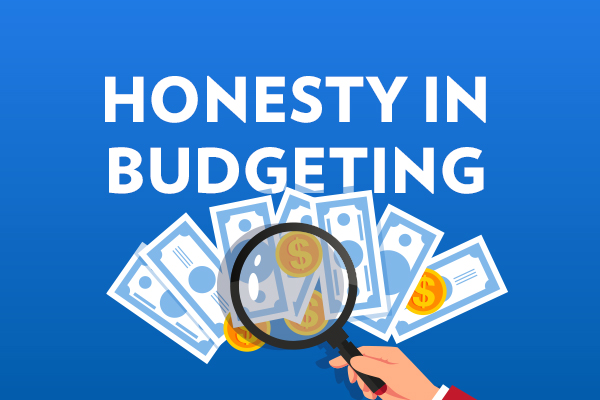On May 29, Governor Wolf signed a budget package into law for fiscal year (FY) 2020–2021, which begins on July 1. Due to the extreme uncertainty surrounding the pandemic, it is a partial budget. Education, human services, pensions, and debt payments were all funded for the full year in the same amounts as last year. All other operations were funded for a five-month period, that is, until November 30, at which time the economic impact of the virus will be better known and recovery (or not) will be underway. This approach makes some sense, although certain programs such as higher education that are not nearly as essential as other programs were funded for a full year anyway.
The budget package totaled $55.7 billion in state and federal money, including emergency coronavirus aid from the massive CARES Act. The main appropriations bill (HB 2387) was $25.8 billion. The bill allocating federal aid monies was SB 1108 (Browne), and the code bill specifying the rules for using federal aid was HB 2510 (Turzai). The annual fiscal code bill (HB 1232), sometimes called the instruction manual for the budget, tells state agencies how to use appropriated monies.
Heavy Reliance on Federal Funds
Per the language of the CARES law, federal aid money isn’t allowed to replace revenue, that is, to fund line items that would otherwise be cut due to reduced tax collections. In fact, it is being used for revenue replacement. For example, Penn Live reported on May 29 that $300 million in federal aid will go to property tax relief, a purpose normally filled by casino revenue, which has obviously been nil in recent months.1 CARES money also shows up in multiple health and welfare line items via the manipulation of supplemental spending requests. Such requests, that is, appropriations in FY 2020–2021 for money already spent in FY 2019–2020 show up as negative amounts. This doesn’t mean the government underspent: rather, the state allocated CARES money for that spending. Examples include $91 million for Medicaid service payments, $11.35 million for mental health initiatives, and $8.8 million for intellectual disability services.
Overall, the state and localities together will receive $11.6 billion of federal money under the CARES Act.2 The money is “use it or lose it”: it cannot be banked indefinitely, and it can only be used for virus-related purposes. This mandate surely encourages states to create uses for the money, and that could result in unfunded programs next year. Here is the breakdown:
- $5.3 billion nondiscretionary CARES money: this money is given to the states for federally designated purposes.
- $4 billion discretionary CARES money: This is money received from the federal government, but the state chooses how to spend it. The new budget appropriates $2.7 of that money and leaves $1.3 billion unallocated for now, but the legislature plans to use it in November.
- $2.4 billion local CARES money: These funds are directed by the federal government to qualified Pennsylvania localities, which include Allegheny, Bucks, Chester, Delaware, Lancaster, and Montgomery counties as well as Philadelphia.
Nongovernment actors have also received abundant federal handouts, including about $13.9 billion of supplementary federal funding, $20.8 billion in Paycheck Protection Program loans, and $300 million in food stamps. Healthcare providers have received $1.9 billion, and institutions of higher education have received $500 million: $37.4 billion all together. Federal tax rebates of $1,200 per person and $500 per child are expected to benefit Pennsylvanians in the amount of $10.8 billion. This tidal wave of federal dollars conveys a false sense of security that any economic downturn can simply be alleviated with federal money, and will be.
State Revenues
On the revenue side, the Independent Fiscal Office (IFO) reported things could get ugly, but they are unlikely to match the worst scenarios contemplated in March and April. In the second quarter of this year (March-May), the IFO estimates wages and salaries fell by 9.7% relative to the same period last year. By the fourth quarter, the IFO projects the difference will be just -1.7%. Interestingly, IFO director Matthew Knittel pointed in his latest briefing to a study from the credit rating firm Moody’s that finds Pennsylvania’s economic diversification and flat tax structure have helped Pennsylvania weather the present crisis.3
This is all the more reason to keep taxes low when lawmakers reopen the budget in November and work to improve our business environment instead of hunting for more revenue.
Budget Problems Existed Before COVID-19
Budget deficits are nothing new in Pennsylvania. The current budget was heading into deficit even before the pandemic. The projected budget deficit is now $1.3 billion, as the full FY 2019–2020 revenue projection has fallen 9% from a year ago. Presently, the IFO projects a revenue recovery, with revenues totaling $36.1 billion in the next fiscal year, even though that number is highly uncertain.4
One thing is certain: state lawmakers cannot depend on Washington to balance the state budget next year. Now more than ever, we need to limit spending growth through passage of the Taxpayer Protection Act, restore legislative control by consolidating government accounts into the General Fund, and statutorily limit new borrowing, not only against the General Fund but also by off-budget state authorities and special entities.
Figure 1
Figure 1: State and Federal Funds in 2020-2021 Pennsylvania Budget
1. “Section 1726-M of HB 103. See also “Wolf Signs Short-Term Budget With No Tax Hike, Along With Emergency Federal Aid,” Penn Live, May 29, 2020, https://www.pennlive.com/news/2020/05/gov-tom-wolf-signs-short-term-budget-with-no-tax-hike-along-with-emergency-federal-aid.html.
2. Calculations based on analysis of HB 2387, SB 1108, Pennsylvania Independent Fiscal Office, and the Federal CARES Act.
3. “Five Month PA 2020-21 Budget on Fast Track to Gov. Wolf’s Desk by End of Week,” Capitolwire.com, May 26, 2020, https://www.capitolwire.com/default.asp?iRegionId=1&URL=/shared/cwArticle.asp&ArticleId=2570126.
4. Initial Revenue Estimate FY 2020-21, Pennsylvania Independent Fiscal Office, May 26, 2020, table 2.2, p. 17, http://www.ifo.state.pa.us/download.cfm?file=Resources/Documents/Revenue-Estimate-2020-05.pdf.
5. For details, see Three Steps to an Honest Budget: Fiscal Reform Priorities 2020-2021, Commonwealth Foundation, February 16, 2020, https://www.commonwealthfoundation.org/policyblog/detail/three-steps-to-an-honest-budget-fiscal-reform-priorities-2020-2021.
RELATED : PENNSYLVANIA STATE BUDGET





